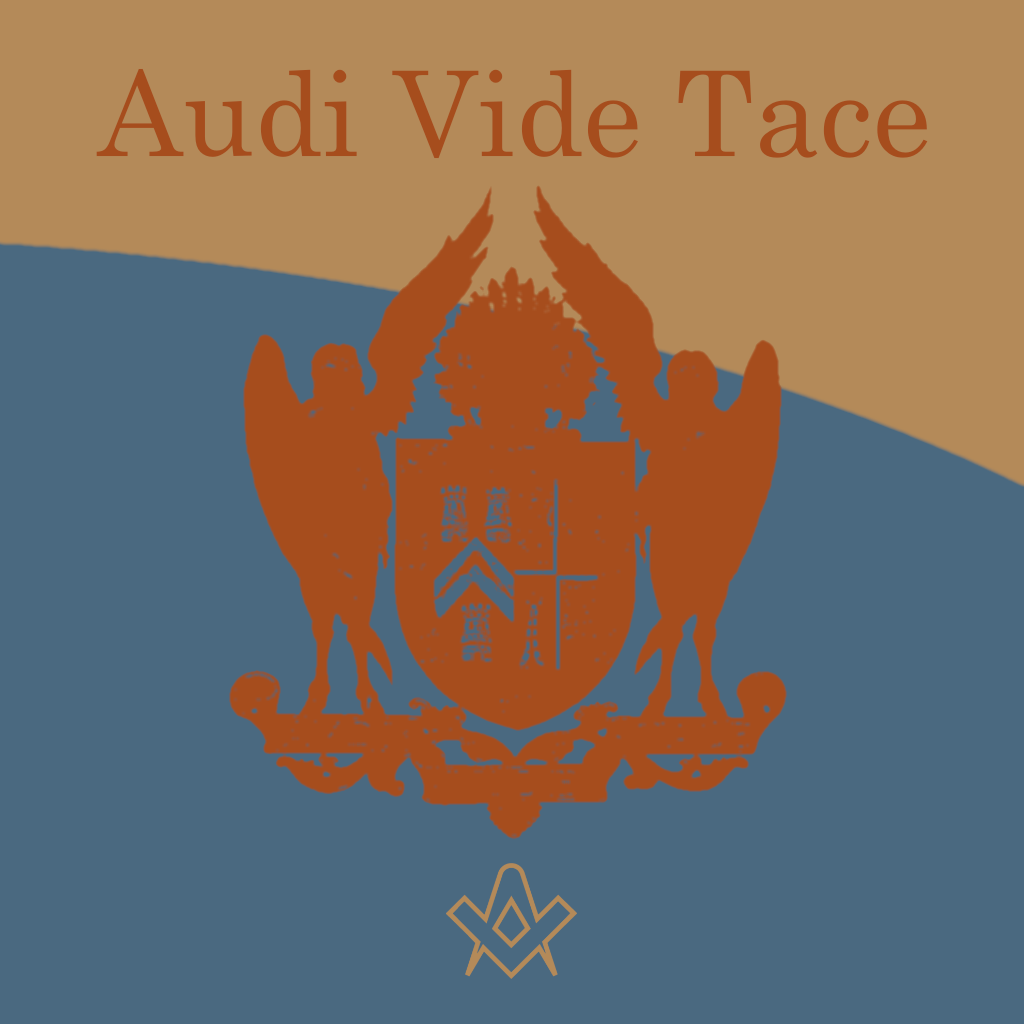There are secrets possessed by the Mason which he must not divulge.
This supposes sealed lips. There are secrets held by Masonry which the individual Mason can only seize if he is willing and able to work for them. This demands effort, toil and tenacity. May we be granted the grace and the steadfastness of purpose to discharge fully both tasks.
[George H. T. French]
audi | vide | tace
These three Latin words can be found in the Coat of Arms of the United Grand Lodge of England. This motto was adopted upon the “Union of December 1813″ when:
The motto “Audi, vide, tace” made its first appearance in the Freemasons’ Calendar from 1777
It is derived from a line of “leonine” verse (of a type much used in the Middle Ages) and in full is “Audi, Vide, Tace, Si Vis Vivere In Pace” – meaning hear, see and hold your tongue, if in peace you would live on.
Leonine verse is a type of versification based on internal rhyme, and commonly used in Latin verse of the European Middle Ages.
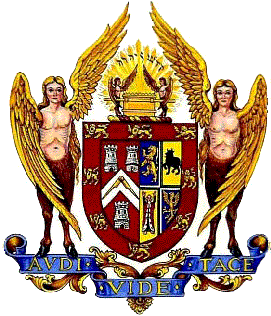
Coat of Arms United Grand Lodge of England
Imaged liked: wikimedia
Masonic author George H. T. French describes the meaning of the motto:
“The first two words, audi, vide, refer to the alertness conducive to the acquisition of knowledge. For it is through these two senses, hearing and seeing, that we absorb most of our information. Tace, or be silent, refers to the dissemination of information, and alerts one to the desirability of thinking before speaking, of deciding what should be kept hidden, of ever bearing in remembrance those truly Masonic virtues, silence and circumspection.”
“Audi, Vide, Tace” by George H. T. French, Published in The Texas Freemason, September 1973
Taylors Ritual: MM Certificate Presentation
Listen, Observe, Be Silent – a good moto for the wise freemason
There are various reasons for being silent if one has started to penetrate the hidden mysteries of nature and science:
– avoiding attack by those offended by their own ignorance
– preventing the unworthy from using the technical knowledge for improper ends
– avoiding sceptical mental influences disturbing the unfoldment of the knowing
– keeping faith with inner plane influences.
According to the Oxford English Dictionary, “tace” is Latin for a candle
The origin of tace is Latin for (a) candle
More Details World Histories
“Tace” as a verb means “to be silent”. As a noun tace means “candle”. A candle is silent and emits light. Thus the wisdom of silence in the pursuit and protection of Masonic light.
This latin saying is a vulgata for one of the best advices we can have nowadays: Listen, Observe, Be Silent.
The Vulgate is a late 4th-century Latin translation of the Bible that was to become the Catholic Church’s officially promulgated Latin version of the Bible during the 16th century, and is still used fundamentally in the Latin Church to this day.
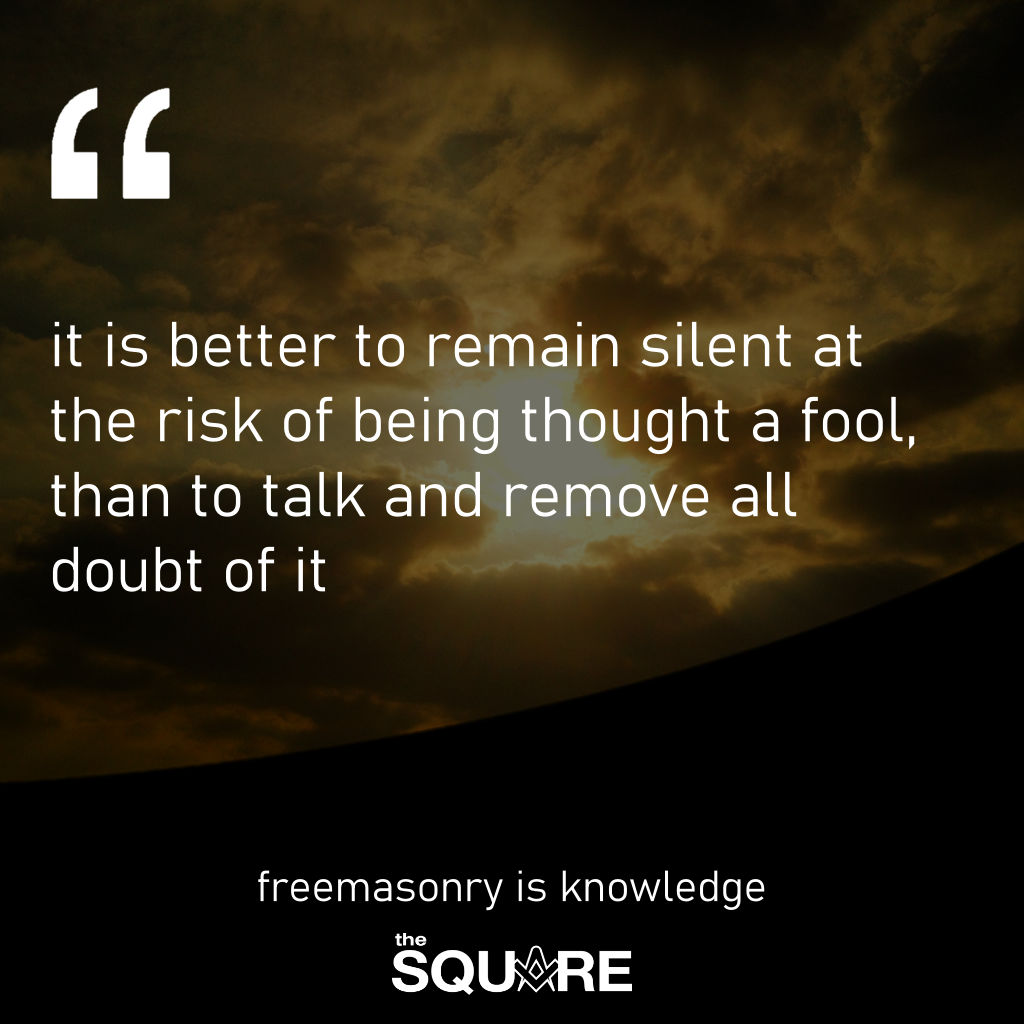
“it is better to remain silent at the risk of being thought a fool, than to talk and remove all doubt of it”
There are many other examples of similar exhortations to “remain silent” used throughout the world, from various cultures and societies. The depiction of the ‘three wise monkeys’ are probably the best known example of a ‘code of proprietary conduct’:
… hear no evil
see no evil
speak no evil …
According to research, this originates from a 17th-century carving over a door of the famous Tōshō-gū shrine in Nikkō, Japan. The carvings at Tōshō-gū Shrine were carved by Hidari Jingoro, and believed to have incorporated Confucius’s Code of Conduct, using the monkey as a way to depict man’s life cycle.
In Chinese, a similar phrase exists in the late Analects of Confucius from 2nd to 4th century BC:
“Look not at what is contrary to propriety; listen not to what is contrary to propriety; speak not what is contrary to propriety; make no movement which is contrary to propriety.”
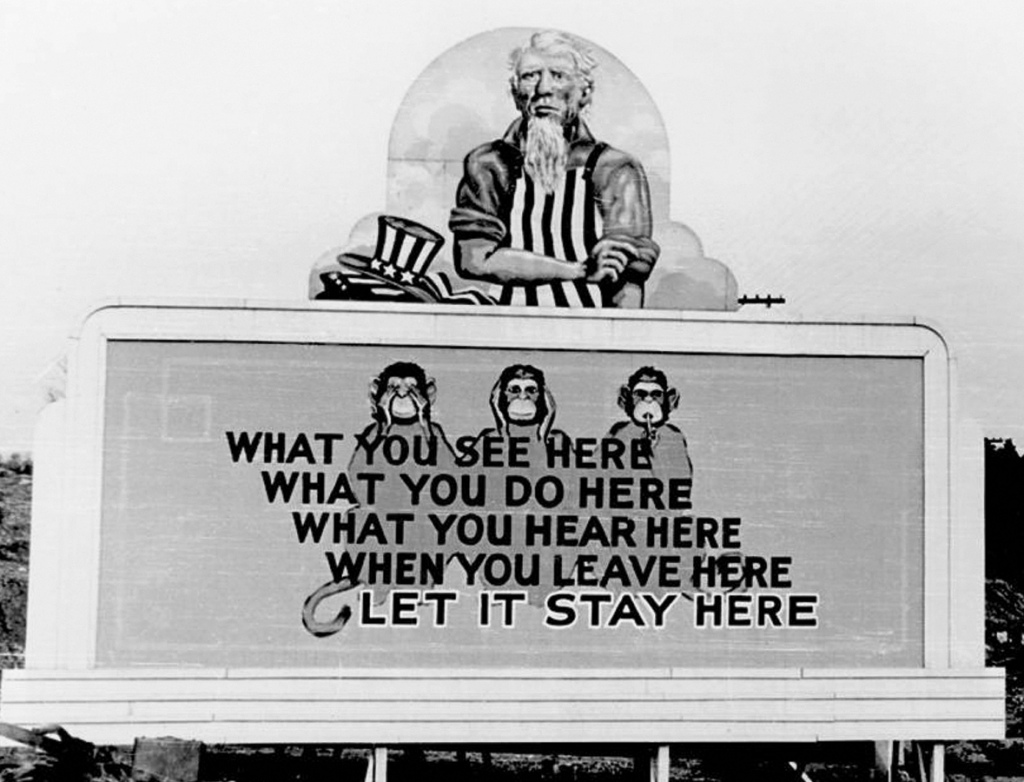
A World War II poster directed at participants in the Manhattan Project
IMAGE CREDIT: Wikimedia
And in many other situations, people are asked to remain silent – above is a World War II poster directed at participants in the Manhattan Project
In conclusion:
“it is better to remain silent at the risk of being thought a fool, than to talk and remove all doubt of it”
Should this not only apply to conversation but also social media comments?
Recent Articles: symbolism
 The Practice of Freemasonry - P1 Embark on a transformative journey with Freemasonry, where the exploration of your Center unlocks the Perfect Ashlar within. Through the practices of Brotherly Love, Relief, Truth, and Cardinal Virtues, discover a path of enlightenment and self-improvement. Embrace the universal creed that binds us in the pursuit of our true essence. |
 Discover the fascinating history and significance of the Warrant of Constitution within Freemasonry. Unveil the evolution of this crucial authorization, its role in legitimizing Lodges, and its lasting impact on the global brotherhood of Freemasons. Explore the intricate link it provides between tradition and modern practice. |
 Freemasonry: Unravelling the Complexity of an Influential Organization Mysterious and captivating, Freemasonry has piqued the interest of seekers and skeptics alike. With its intricate blend of politics, esotericism, science, and religion, this enigmatic organization has left an indelible mark on society. Prepare to delve into the secrets of Freemasonry and unlock its hidden depths. |
 Unlocking the Mysteries of Freemasonry: In the hallowed halls of Freemasonry, a powerful symbol lies at the heart of ancient rituals and teachings—the Volume of the Sacred Law. This sacred book not only guides the spiritual and moral journey of Freemasons but also serves as a beacon of universal wisdom and enlightenment. |
 The Ancient Liberal Arts in Freemasonry Embark on a journey of self-improvement and wisdom with Freemasonry's guiding principles. Ascend the winding stairs of moral cultivation, analytical reasoning, and philosophical understanding. Embrace arithmetic's mystical properties and geometry's universal truths. Let the harmony of the universe inspire unity and growth. Discover the profound, hidden knowledge in Freemasonry's path to enlightenment. |
 Initiation rituals around the world are filled with fascinating elements and different images. One of them is that of darkness. When societies speak of darkness, they often mean a lack of knowledge, a lack of choice, or a symbol of evil. During initiation rituals, darkness is used to represent the initiate's lack of knowledge about the world, society, and initiation in general. It can also represent the initiate's inability to make a choice or endure a situation. Whether you have participated in an initiation rite or not, the meaning of darkness remains an intriguing concept worth exploring. Initiation rituals around the world are filled with fascinating elements and different images. One of them is that of darkness. When societies speak of darkness, they often mean a lack of knowledge, a lack of choice, or a symbol of evil. During initiation rituals, darkness is used to represent the initiate's lack of knowledge about the world, society, and initiation in general. It can also represent the initiate's inability to make a choice or endure a situation. Whether you have participated in an initiation rite or not, the meaning of darkness remains an intriguing concept worth exploring. |
 Masonic Deacon rods potentially trace their origins to Greek antiquity, symbolically linked to Hermes' caduceus. As Hermes bridged gods and mortals with messages, so do Masonic Deacons within the lodge, reinforcing their roles through ancient emblems. This connection underscores a profound narrative, weaving the fabric of Masonic rites with the threads of mythological heritage, suggesting the rods are not mere tools but bearers of deeper, sacred meanings that resonate with the guardianship and communicative essence of their divine counterpart, Hermes, reflecting a timeless lineage from myth to Masonic tradition. |
 The biblical pillars erected by Solomon at the Temple's porch, hold a profound place in history. These brass behemoths are not mere decorations; they are symbols of strength, establishment, and divine guidance. Explore their fascinating construction, dimensions, and the deep meanings they carry in both biblical and Masonic contexts. |
 Unlocking the Mind's Potential: Dive deep into ground breaking research revealing how simple daily habits can supercharge cognitive abilities. Discover the untapped power within and redefine your limits. Join us on this enlightening journey and transform your world! |
 Dive deep into the symbolic importance of the trowel in Masonry, representing unity and brotherly love. From its historical roots in operative masonry to its significance in speculative masonry, this article explores the trowel's multifaceted role. Discover its connection to the sword, the story of Nehemiah, and the Society of the Trowel in Renaissance Florence. Unravel the layers of meaning behind this enduring Masonic symbol. |
 Symbolism of The Builder's Jewel Batty Langley's "The Builder’s Jewel" (1741) is a visual masterpiece of Masonic symbolism, showcasing Langley's deep understanding of Freemasonry. The frontispiece highlights key symbols like the three pillars and the legend of Hiram Abiff, emphasizing Langley's dedication to Masonic traditions and teachings. |
 Unveil the mystique of the colour blue in Masonic symbolism. A hue evoking universal friendship and benevolence, its roots span ancient cultures, infusing Freemasonry's core values. This article explores blue's profound significance, guiding Freemasons towards wisdom and spiritual enlightenment. Discover the fascinating journey of this universal symbol. |
 Discover the intriguing world of the plumb in Masonic symbolism with our in-depth analysis. Uncover its rich history, moral teachings, and significance in Freemasonry, guiding members on their path to truth, integrity, and justice. Immerse yourself in the captivating power of this symbol that shapes lives within the brotherhood. |
 Unlock the mysteries of Freemasonry with 'The Key,' a profound Masonic symbol. This seemingly simple instrument holds a deeper meaning, teaching virtues of silence and integrity. Explore its ancient roots, from Sophocles to the mysteries of Isis, and discover how it symbolizes the opening of the heart for judgment. |
 Unlock the secrets of the Freemasonry with The Blazing Star - a symbol that holds immense significance in their rituals and practices. Delve into its history, meaning and role in the different degrees of Freemasonry with expert insights from the Encyclopedia of Freemasonry by Albert Mackey. Discover the mystique of The Blazing Star today! |
 There is no symbol more significant in its meaning, more versatile in its application, or more pervasive throughout the entire Freemasonry system than the triangle. Therefore, an examination of it cannot fail to be interesting to a Masonic student. Extract from Encyclopedia of Freemasonry by Albert Mackey |
 The Hiramic Legend and the Myth of Osiris Hiram Abiff, the chief architect of Solomon’s Temple, is a figure of great importance to Craft Freemasonry, as its legend serves as the foundation of the Third Degree or that of a Master Mason. He is the central figure of an allegory that has the role of teaching the Initiate valuable alchemical lessons. Although his legend is anchored in biblical times, it may have much older roots. |
 This rite of investiture, or the placing upon the aspirant some garment, as an indication of his appropriate preparation for the ceremonies in which he was about to engage, prevailed in all the ancient initiations. Extract from The Symbolism of Freemasonry by Albert G. Mackey |
 The All-Seeing Eye of God, also known as the Eye of Providence, is a representation of the divine providence in which the eye of God watches over humanity. It frequently portrays an eye that is enclosed in a triangle and surrounded by rays of light or splendour. |
 What's in a Word, Sign or Token? Why do Freemasons use passwords, signs, and tokens? As Freemasons we know and understand the passwords, signs and tokens (including grips), which are all used a mode of recognition between members of the fraternity. |
 A Temple of Living Stones: Examining the Concept of a Chain of Union What are the origins of the Chain of Union? And how did they come about ? The answers may surprise some members as W Brother Andrew Hammer investigates, author of Observing the Craft: The Pursuit of Excellence in Masonic Labour and Observance. |
 One of the best loved stories for the festive season is ‘A Christmas Carol’. A traditional ghost story for retelling around the fire on a cold Christmas Eve, it is a timeless classic beloved by those from all walks of life. Philippa explores the masonic allegory connections… |
 The Trowel - Working Tool of the Master Mason The Trowel is the symbol of that which has power to bind men together – the cement is brotherhood and fellowship. |
 Two Perpendicular Parallel Lines The point within a circle embordered by two perpendicular parallel lines, with the Holy Bible resting on the circle, is one of the most recognizable symbols in Freemasonry. It is also one which always raises a question. How can two lines be both perpendicular and parallel? |
 "The first great duty, not only of every lodge, but of every Mason, is to see that the landmarks of the Order shall never be impaired." — Albert Mackey (1856) |
 It is common knowledge that the ancient wages of a Fellowcraft Mason consisted of corn, wine, and oil. |
 “Do not come any closer,” God said. “Take off your sandals, for the place where you are standing is holy ground.” Exodus 3:5 |
 The Secret Language of the Stone Masons We know of Masons' Marks but lesser known are the 'argots' used by the artisans - in part 2 of a series on the social history of the Operative Masons we learn how the use of secret languages added to the mystery of the Guilds. |
 The phrase appears in the Regius Poem. It is customary in contemporary English to end prayers with a hearty “Amen,” a word meaning “So be it.” It is a Latin word derived from the Hebrew word - Short Talk Bulletin - Vol. V June, 1927, No.6 |
 Egypt's 'Place of Truth' - The First Operative Stone Masons' Guild? Was ancient Egypt's 'village of the artisans' the first operative stone masons' guild? And was their use of 'identity marks' a forerunner of the Mason's Marks of the cathedral builders of the Middle Ages? Read on for some possible answers… |
 The Pieces of Architecture and the Origin of Masonic Study Discover the journey of the Apprentice – from Operative to Speculative. This journey has been carried out since the times of operative Freemasonry but today the initiate works in the construction of his inner temple. |
 The Builders' Rites - laying the foundations operatively and speculatively The cornerstone (also ‘foundation’ or ‘setting’ stone) is the first stone to be set in the construction of the foundations of a building; every other stone is set in reference to this. |
 Applying the working tools to achieve our peculiar system of morality. |
 We take an in-depth look at the 47th Proposition of the 1st Book of Euclid as part of the jewel of the Past Master. |
 The Cable Tow: Its Origins, Symbolism, & Significance for Freemasons - Unbinding the significance of the cable tow. |
 We examine at one of the most impressive moments of the initiatory ceremony, a certain rite known as Circumambulation, and ask what is its meaning and purpose ? |
 So, what is the Level? And why do we use it in Freemasonry? |
 What is the mysterious pigpen or Masonic cipher that has been used for centuries to hide secrets and rituals? |
 The Story of the Royal Arch - The Mark Degree Extracted from William Harvey's 'The Story of the Royal Arch' - Part 1 describes the Mark Degree, including the Working Tools. |
 Ashlars - Rough, Smooth - Story of a Stone How we can apply the rough and smooth Ashlars with-in a masonic context |
 A detailed look at the Chamber of Reflection: A Revitalized and Misunderstood Masonic Practice. |
 Exploring the origin and symbolism of Faith, Hope and Charity |
 The Noachite Legend and the Craft What is it to be a true Noachidae, and what is the Noachite Legend and the Craft ? |
 In Masonic rituals, Jacob’s ladder is understood as a stairway, a passage from this world to the Heavens. |
 What is the meaning of the Acacia and where did it originate ? |
 What is the connection with the Feasts of St John and Freemasonry |
 The Forget-Me-Not and the Poppy - two symbols to remind us to 'never forget' those who died during the two World Wars. |
 Biblical history surrounding the two pillars that stood at the entrance to King Solomon's Temple |
 Is there a direct link between Judaism and Freemasonry? |
 The symbolism of the beehive in Masonry and its association with omphalos stones and the sacred feminine. |
 The Wages of an Entered Apprentice |
 An explanation of the North East corner charge which explores beyond one meaning Charity - |
 A brief look at the origins of the two headed eagle, probably the most ornamental and most ostentatious feature of the Supreme Council 33rd Degree Ancient and Accepted (Scottish ) Rite |
 A Muslim is reminded of his universal duties just as a Freemason. A Masonic Interpretation of the Quran's First Two Chapters |
 The three Latin words -{Listen, Observe, Be Silent}. A good moto for the wise freemason |
masonic knowledge
to be a better citizen of the world
share the square with two brothers

click image to open email app on mobile device
Tubal Cain
Masonic Apron NFT
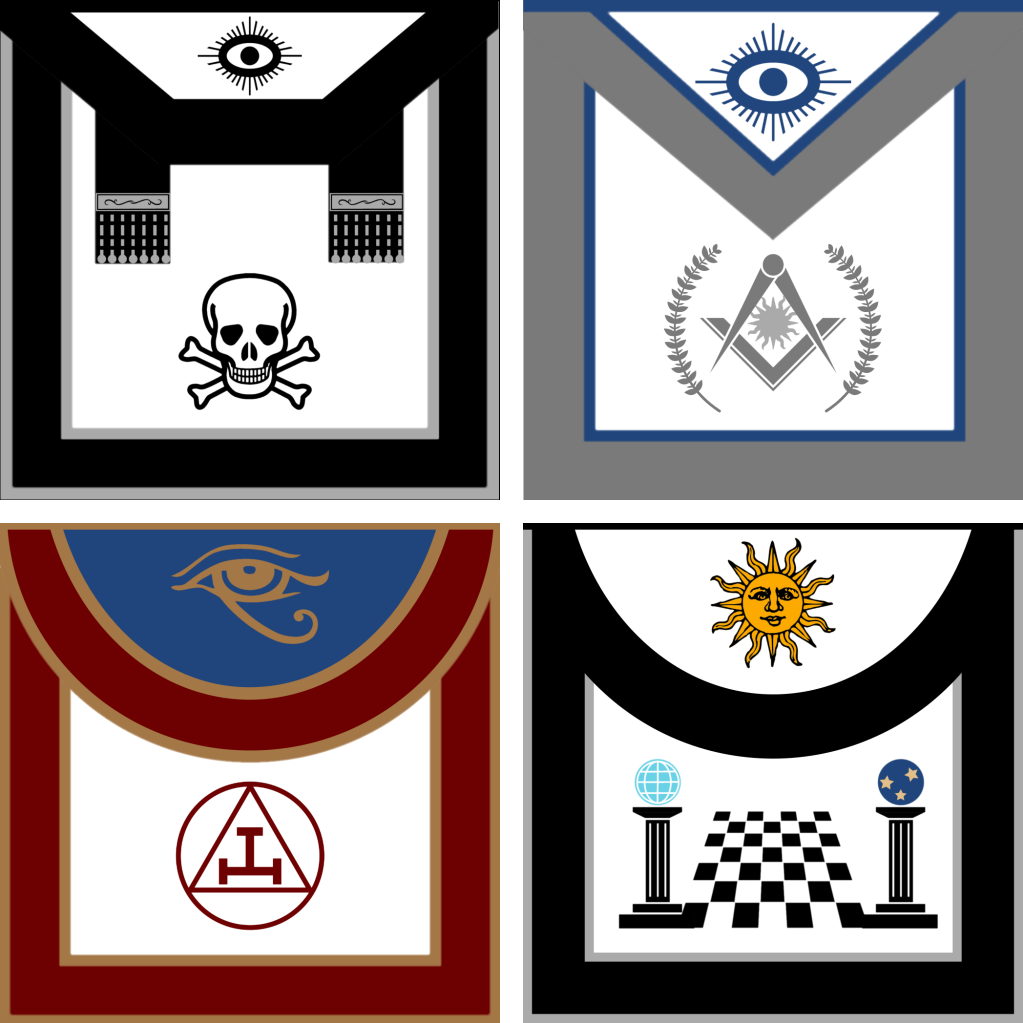


Each NFT includes the JPEG image plus a full size masonic apron and shipping worldwide
